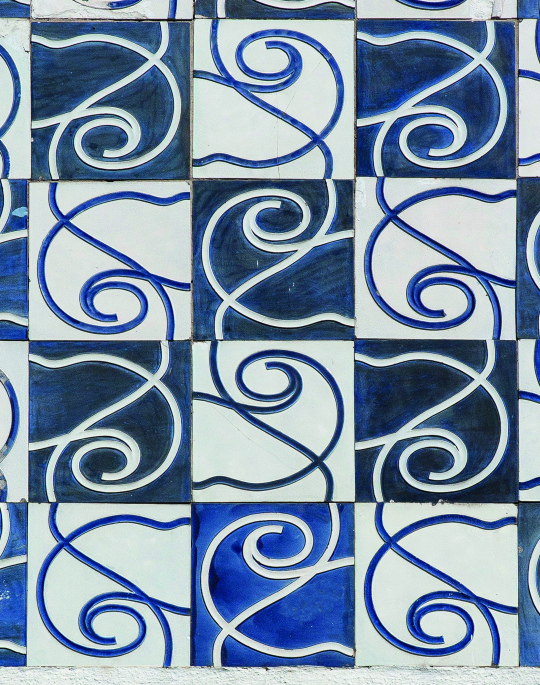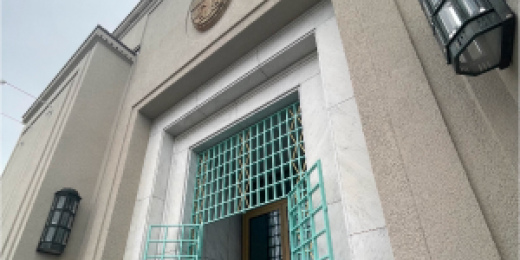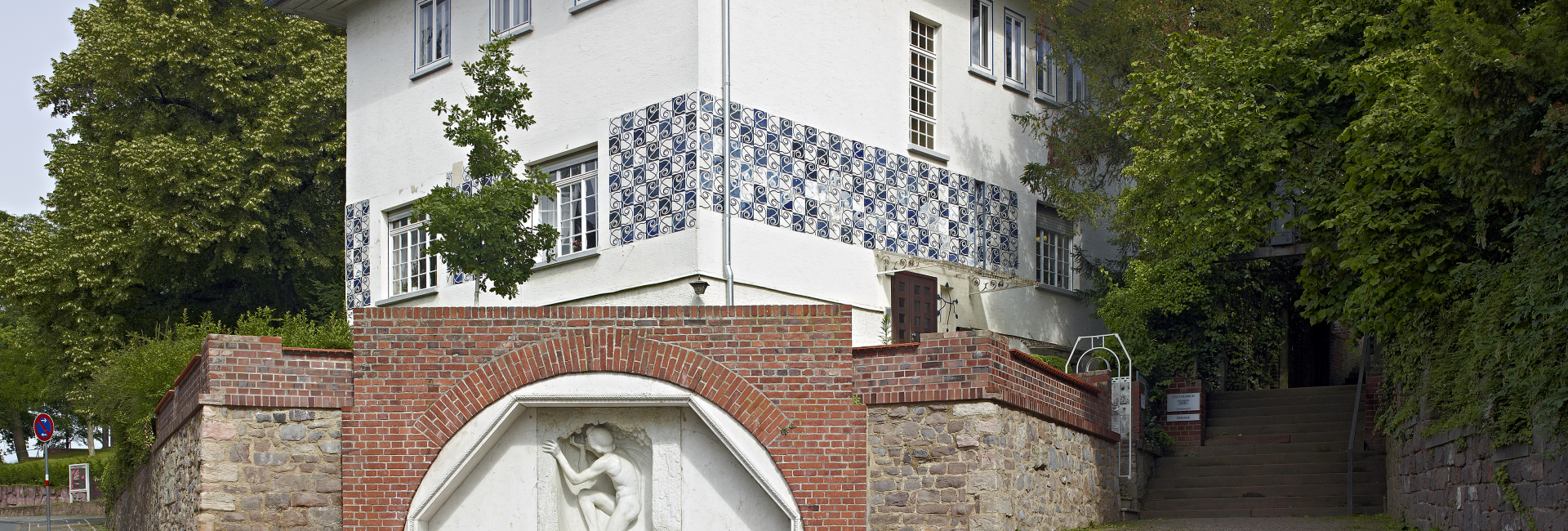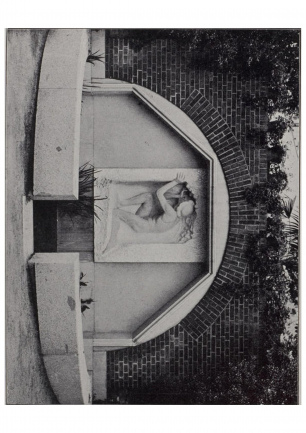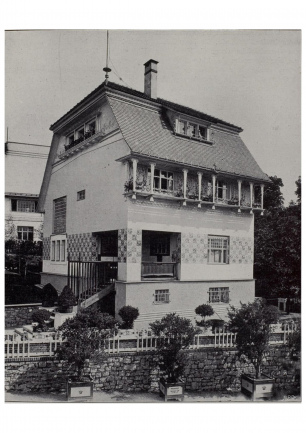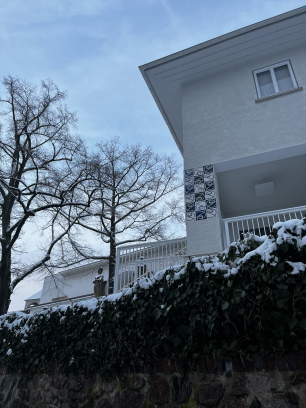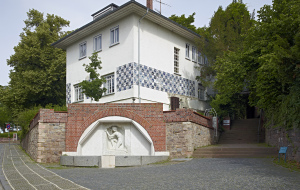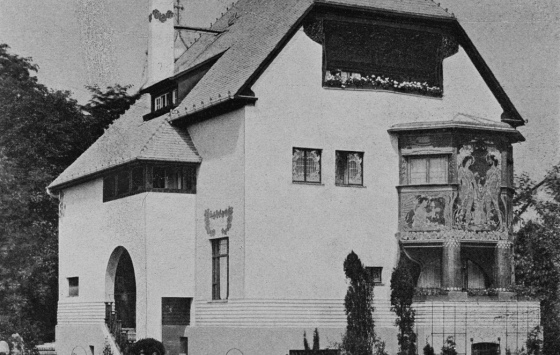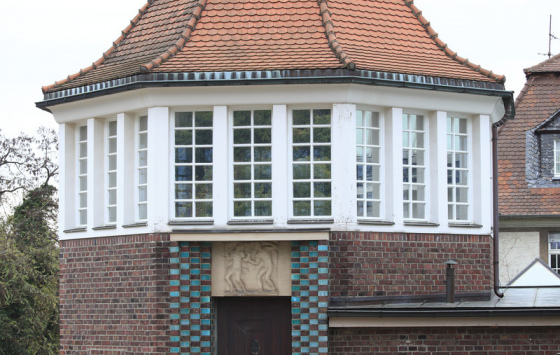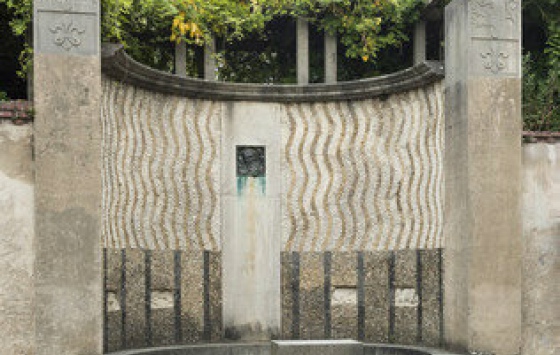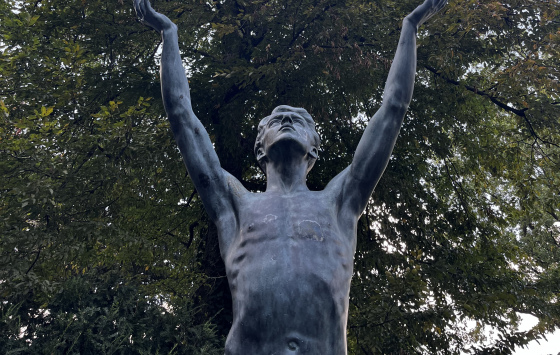
Olbrich House
Architekt: Joseph Maria Olbrich
Bauphase: 1900 - 1901
The former residence of the architect Joseph Maria Olbrich was planned and realised by him at a prominent location and as part of the entire complex for the exhibition "A Document of German Art" of 1901. Situated at the foot of the Ernst Ludwig House, the architecture is determined both by this other building and by the location on a slope. Consequently, the main entrance is oriented towards the large outside staircase of the Studio Building. The three-storey residential building, built on an almost square ground plan and with a brick-red roof that was formerly lower to the north, is characterised by a surrounding blue and white frieze of tiles and the differently placed windows. A south-facing flower gallery on the upper floor gave the clearly structured facade a lively appearence.
The wooden outside staircase to the west led to an open loggia, called piazza by the architect, from where visitors could enter the building. In Olbrich's architecture, windows of various sizes reflect the inner structure of the house: while a small transverse window indicated the location of the bathroom, the large, subdivided opening next to it marked the high hall as the central space of the house.
The smaller entrance in the east led to the kitchen and the utility rooms. A kitchen garden in front of it enlarged this functional area. It was part of the architect's garden designed by Olbrich, which was planned in detail as an extended living space. A birch grove in the north with a "cool seat", a cleverly designed front area of the main entrance with lawn, high-stemmed plants, plant pots and mosaic pavement as well as a flower garden in the south with a dominant columnar oak tree formed a unit with the house.
The property, situated on a sloping terrain, is supported by a quarry-stone wall along Alexandraweg. Ludwig Habich, also a member of the artists' colony, designed a wall fountain with a relief of a "Young Man Drinking Water".
The house, built in 1901, was severely damaged in the Second World War. The partly historical substance in the lower floors, the blue and white tile frieze characteristic of this villa and the ornamentally designed garden gate, have been preserved as important elements of the Olbrich House. Due to the simplified rebuilding of the house from the first floor upwards and the relocation of the entrance to the east, the architect's original design has been hardly comprehensible until today. The revival of the original access via a staircase into a vestibule and the completion of the partially original ornamentation, while retaining the formative changes of the post-war period are the overriding goal of the restoration.
